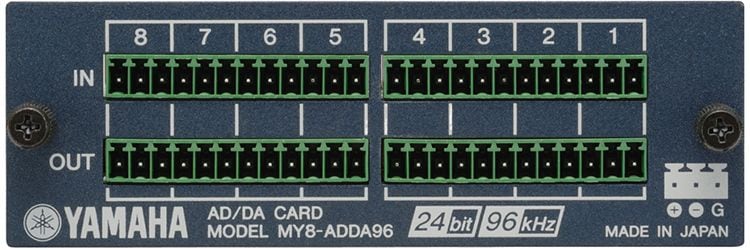DYNAMIC RANGE PART ONE: ANALOGUE TERMINALS

Although, in many cases, sound comes to us in a heavily compressed form, dynamics are one of the most important factors in the life of a recording or live sound engineer. Whether it's Metallica playing Enter Sandman or a string orchestra playing Arvo Part’s Summa, both can only be reproduced by systems having high dynamic ranges.
A system’s dynamic range can be defined as ‘the difference in level between the loudest possible signal (just before the system is clipping) and the lowest possible signal (just before the signal drowns in the system’s noise floor)’. There’s more to dynamics than that, of course, but the most important parameters in dynamic range are the clip level and the noise floor level.
Manufacturers of audio equipment have learned to offer components - amplifiers, processors, mixers etc - that can be combined without any problems. For this reason, all components have buffer circuits built in their analogue inputs and outputs, normally using transistors or operational amplifiers. These circuits make sure that the level and frequency range of a component stays independent from the impedance of the previous or next component, making it possible to connect any signal chain without worrying about level changes because of varying input and output impedances.
A variable gain knob or switch is often offered but, to keep the buffer circuits immune to impedance, these are situated on the ‘inside’ of the circuit (between the buffer circuit and the component’s other circuits), never on the outside (between the buffer circuit and the input or output connector). This keeps the gain independent from whatever is connected, which is crucial. However, there is a downside concerning dynamic range: the input and output buffer’s clip level cannot be controlled by the gain setting, it is fixed.
If only the world’s audio manufacturers had agreed on a universal clip level setting for the pro audio industry. Unfortunately, even within a brand’s range of products, clip levels may well differ for various, valid reasons. For example, if a mixing console’s analogue output has a clip level of +18dB and a power amplifier has an input clip level of +24dB, then there’s a difference of 6dB...
Why is this an issue? Assuming that the power amplifier is selected to achieve a certain power level at the output, for the Digital Signal Processor to achieve that output level, a 6dB gain has to be applied in the power amplifier. Without the 6dB gain, the top 6dB of the power amplifier’s power range (that’s three quarters of the total power) can simply never be used. Now, that’s where the power amplifier’s gain is for - but there’s a catch. By increasing the input signal by 6dB, not only is the mixer’s signal level increased, but also the noise level of the power amplifier’s input buffer circuit. So, assuming the mixer output signal has a very low noise floor, applying 6dB gain in the power amplifier raises the system’s noise floor by 6dB, thus also reducing the system’s dynamic range by 6dB. When there’s plenty of dynamic range available then that’s no problem but, in some cases, it can be. Typically sound reinforcement installations in concert halls are very sensitive, with a very low acoustic background noise level in the auditorium. Seats on-axis and close to the system’s loudspeakers may then hear the hissing sound of the system’s noise floor. In that case, a 6dB reduction would drastically improve the sound quality for those seats.
The problem is that there’s normally no gain knob or switch on the ‘outside’ of the buffer circuits. So the only way to achieve the 6dB gain in the system is to modify the buffer circuits to match clip levels. Another solution may be to select components that have the same clip levels.
Technology is helping us in this case, with an increasing share of digital (networked) connections between system components, including microphone pre-amplifiers and power amplifiers with built-in network connectivity optimised to the component’s analogue circuits. The clip level of a digital connection is the so-called ‘0dB full scale’ or 0dBFS level, with the noise floor determined by the bit rate. Since virtually all digital and networked products in the pro audio industry use the same bit rate of 24 bits for inputs and outputs, levels are always exactly the same, ensuring that systems always have the maximum possible dynamic range.






